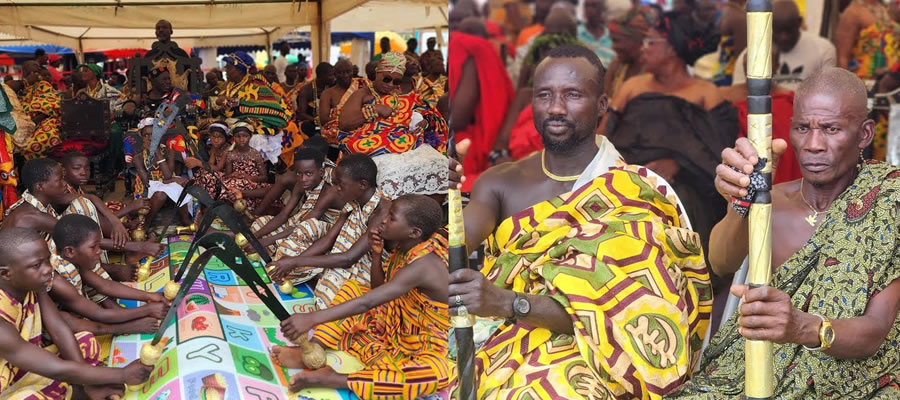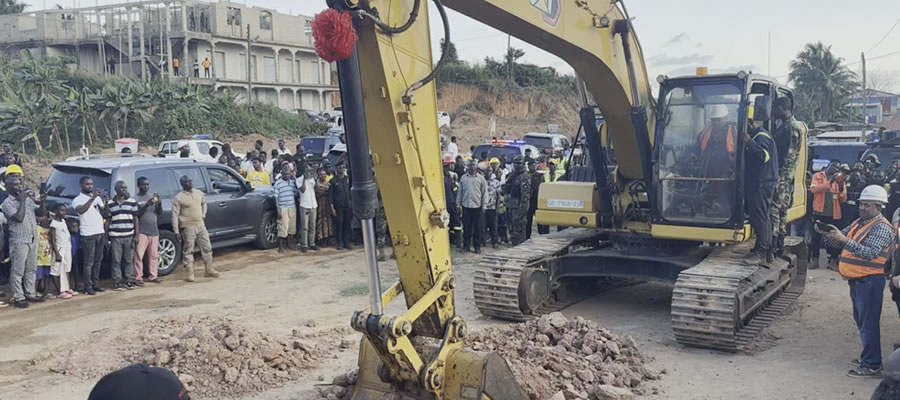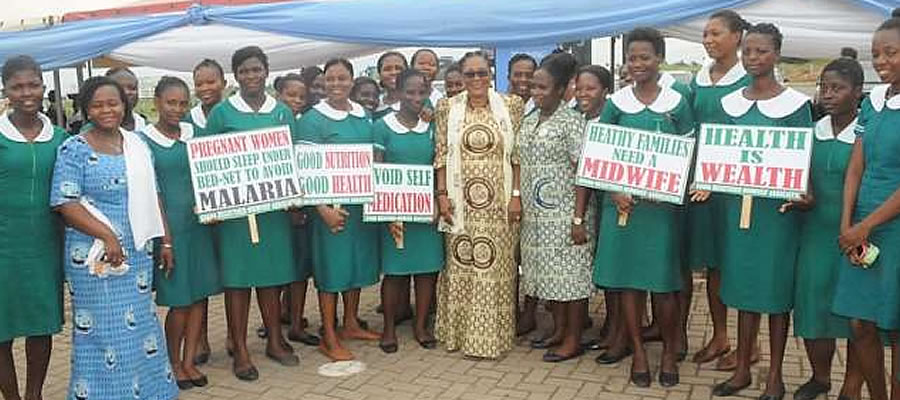

DEMOGRAPHIC CHARACTERISTICS
Demographic Conditions
The 2010 Population and Housing Census (PHC) Report indicates that STMA has a total population of 559,548 and this constituted 23.5 percent of the population of the Western Region. This means that more than one out of every five persons in the Western Region was residing in the metropolis in 2010 (GSS, 2014).
With an annual growth rate of 3.2%, the population was projected to reach 722,798 in 2018 before Effia-Kwesimintsim Sub Metro Council was carved out as a Municipality the population is currently projected at 422,314. The females form 51.1% compared to males who constituted 48.9%. Provisional 2021 census figures released by the stastistical service indicate a drastic reduction of the estimated population figures as presented above.
The total population of the Metropolis is 245,382 of which male constitute 119,344 ( 48.6%) and that of the female is 126,038 (51.4 %) The Sub-Metro breakdown of the population as per the provisional 2021 census indicate that Takoradi Sub-Metro has a total population of 50,065 and Sekondi Sub Metro has 54,772 while Essikado –Ketan ‘s population is 140,545 . Analysis by the status of the place of residence indicates that the bulk of the population lives in the urban area (96.0%) compared to just four percent residing in the places classified as peri-urban.
More than one out of every two persons living in the urban locality in the Western Region was found in the Sekondi-Takoradi Metropolis. In terms of age, the youth and the aged persons constituted about one-third (32.6%) and 6.1% respectively of the population, while the working population formed 61.3%. it emerged from the 2010 PHC Report that the total age dependency was 58.2%. There is congestion in built-up areas leading to the development of slum conditions as a result of the increase in urbanization.



Settlements and Built Environment
The metropolis practices the intensification method of land use. About 90% of the total land area is the built environment. This comprises residential buildings, offices, industries, markets, educational facilities, health facilities and many others. Most of the buildings are sky-rise buildings. This indicates that the high demand for land in the metropolis and the urgent need to make intensive use of the existing land.
The 10% of the land area in the metropolis is used for urban agriculture. This portion is located in the northern part of the metropolis. There is a continual high demand for residential housing hence the agricultural land is decreasing as people extend to these areas to build housing facilities. Therefore, the land use pattern of the metropolis can be said to be an urban land use.
Forest Resources
The metropolis is not noted for having a high forest resource since it is an urban setting and most of its land area has been used for other industrial activities. The only forest in the metropolis is the Monkey Hill Conservation Forest which is reserved for eco-tourism. Apart from that, the mangroves located around the Essei and Butua lagoons and the Whin Estuary also help in monitoring coastline erosion.
The metropolis will soon lack forest resources considering the deforestation rate and the encroachment of the Monkey Hill Conservation Forest. Therefore, the forest Commission should enforce laws governing forests in the metropolis and sensitize the public on the importance of forests.
The 2010 Population and Housing Census (PHC) Report indicates that STMA has a total population of 559,548 and this constituted 23.5 percent of the population of the Western Region. This means that more than one out of every five persons in the Western Region was residing in the metropolis in 2010 (GSS, 2014).
With an annual growth rate of 3.2%, the population was projected to reach 722,798 in 2018 before Effia-Kwesimintsim Sub Metro Council was carved out as a Municipality the population is currently projected at 422,314. The females form 51.1% compared to males who constituted 48.9%. Provisional 2021 census figures released by the stastistical service indicate a drastic reduction of the estimated population figures as presented above.
The total population of the Metropolis is 245,382 of which male constitute 119,344 ( 48.6%) and that of the female is 126,038 (51.4 %) The Sub-Metro breakdown of the population as per the provisional 2021 census indicate that Takoradi Sub-Metro has a total population of 50,065 and Sekondi Sub Metro has 54,772 while Essikado –Ketan ‘s population is 140,545 . Analysis by the status of the place of residence indicates that the bulk of the population lives in the urban area (96.0%) compared to just four percent residing in the places classified as peri-urban.
More than one out of every two persons living in the urban locality in the Western Region was found in the Sekondi-Takoradi Metropolis. In terms of age, the youth and the aged persons constituted about one-third (32.6%) and 6.1% respectively of the population, while the working population formed 61.3%. it emerged from the 2010 PHC Report that the total age dependency was 58.2%. There is congestion in built-up areas leading to the development of slum conditions as a result of the increase in urbanization.
Settlements and Built Environment
The metropolis practices the intensification method of land use. About 90% of the total land area is the built environment. This comprises residential buildings, offices, industries, markets, educational facilities, health facilities and many others. Most of the buildings are sky-rise buildings. This indicates that the high demand for land in the metropolis and the urgent need to make intensive use of the existing land.
The 10% of the land area in the metropolis is used for urban agriculture. This portion is located in the northern part of the metropolis. There is a continual high demand for residential housing hence the agricultural land is decreasing as people extend to these areas to build housing facilities. Therefore, the land use pattern of the metropolis can be said to be an urban land use.
Forest Resources
The metropolis is not noted for having a high forest resource since it is an urban setting and most of its land area has been used for other industrial activities. The only forest in the metropolis is the Monkey Hill Conservation Forest which is reserved for eco-tourism. Apart from that, the mangroves located around the Essei and Butua lagoons and the Whin Estuary also help in monitoring coastline erosion.
The metropolis will soon lack forest resources considering the deforestation rate and the encroachment of the Monkey Hill Conservation Forest. Therefore, the forest Commission should enforce laws governing forests in the metropolis and sensitize the public on the importance of forests.
Date Created : 2/4/2025 12:00:00 AM











 facebook
facebook
 twitter
twitter
 Youtube
Youtube
 +233 593 831 280
+233 593 831 280 0800 430 430
0800 430 430 GPS: GE-231-4383
GPS: GE-231-4383 info@ghanadistricts.com
info@ghanadistricts.com Box GP1044, Accra, Ghana
Box GP1044, Accra, Ghana